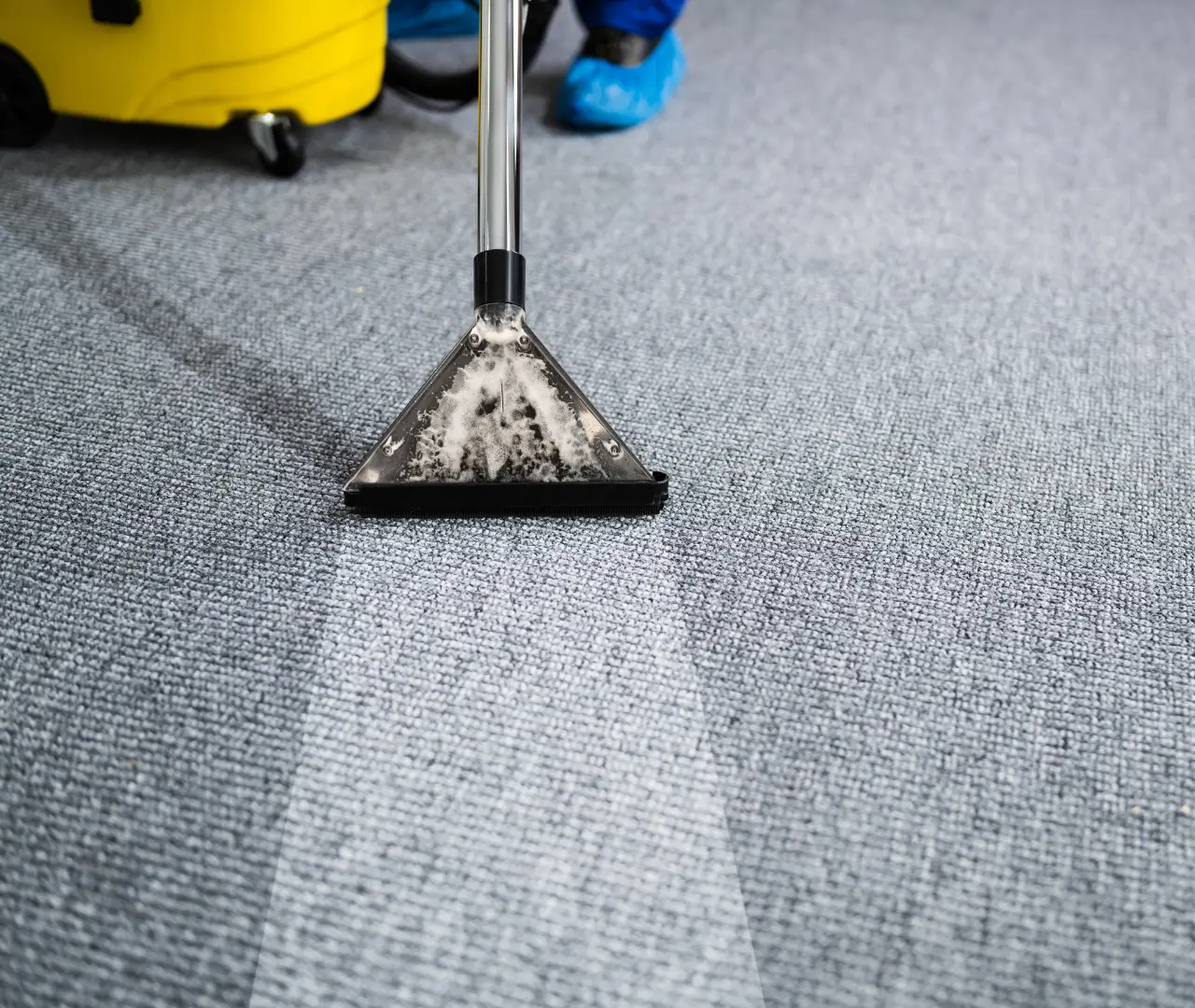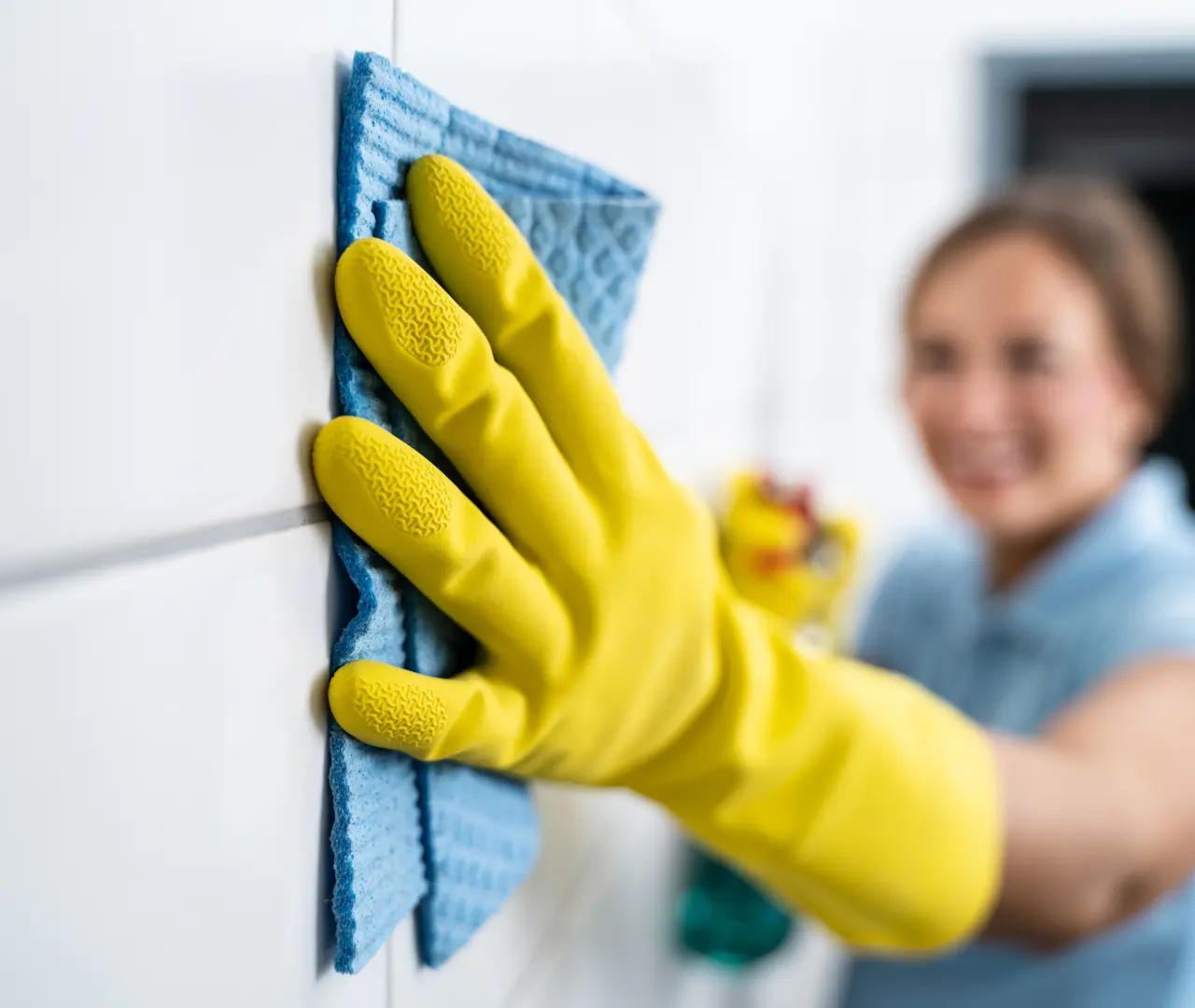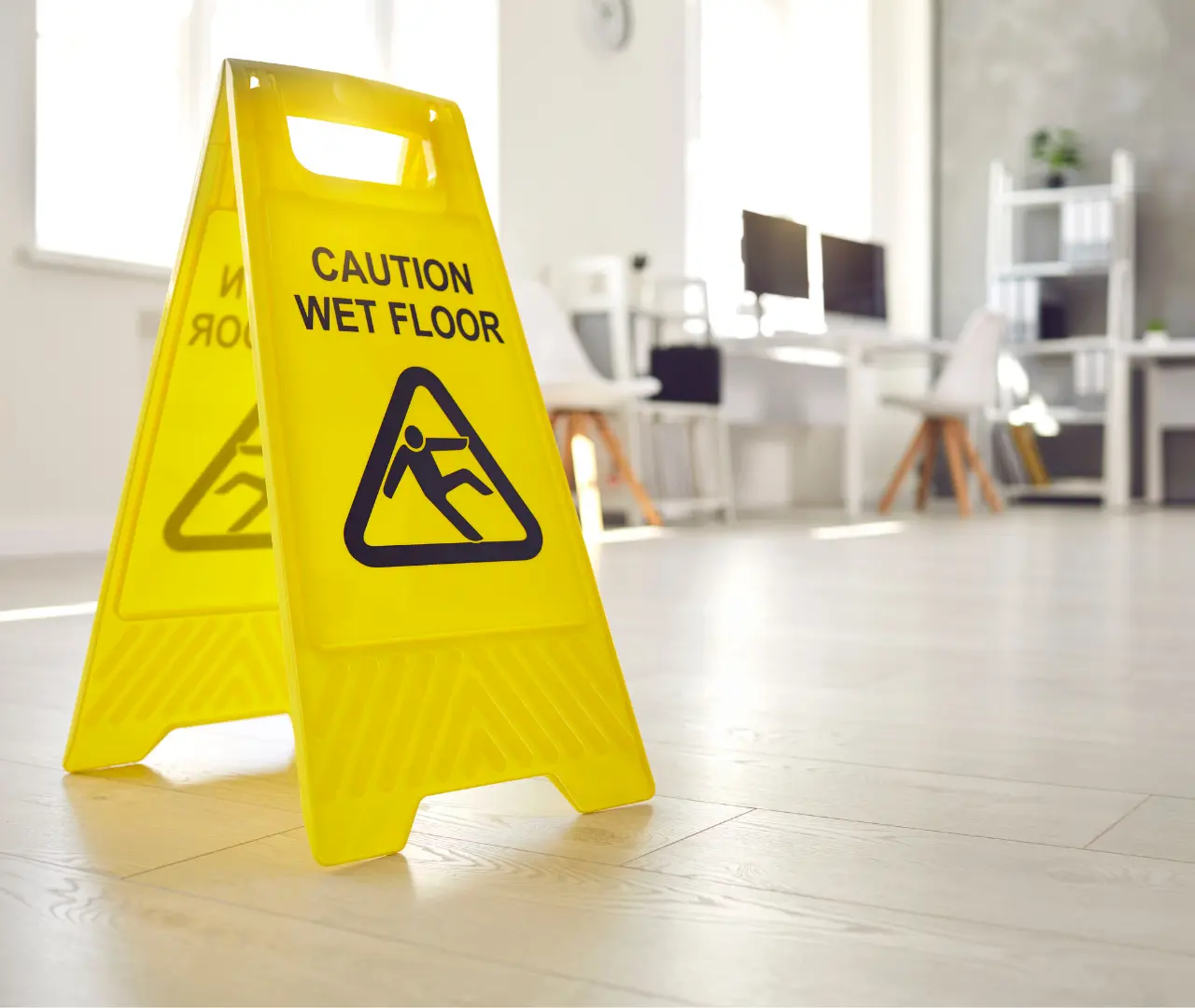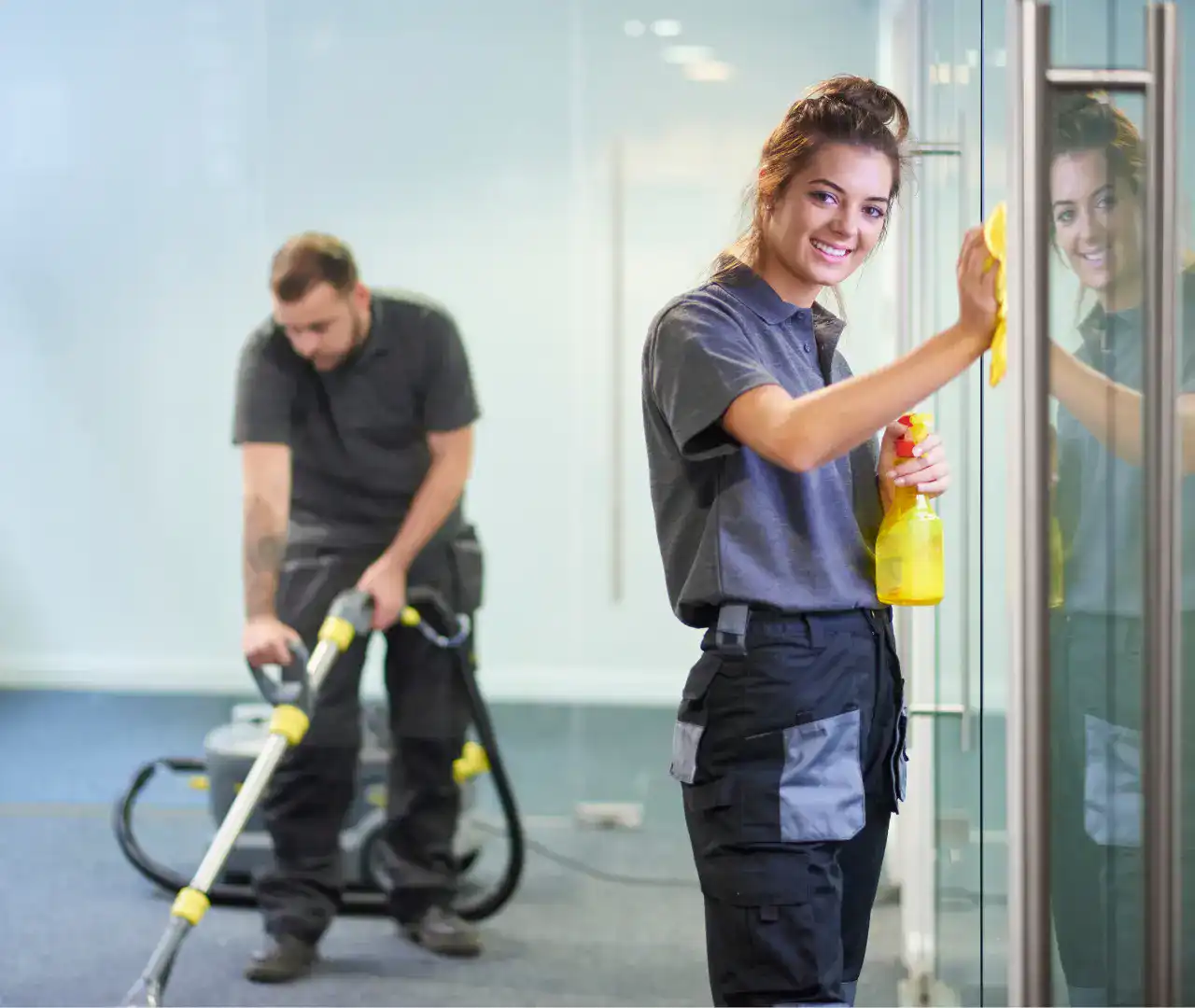The Health and Safety Crisis in Commercial Cleaning That No One Talks About

Every property manager knows that proper cleaning protects the health of their building occupants. What most don't realise is that the cleaning industry itself has a health and safety problem that directly impacts the quality and reliability of service you receive.
Here's what I witnessed during my years managing cleaning contracts across Ontario: skilled cleaning professionals working without proper training, inadequate safety equipment, and zero support when workplace injuries occur. The result? High turnover, inconsistent service quality, and cleaning staff who cut corners on safety protocols because they've never been properly trained or equipped.
This isn't just an industry problem—it's your problem. When cleaning companies treat safety as an afterthought, you end up with unreliable service, potential liability issues, and cleaning staff who may not understand the health impacts of their work on your facility's occupants.
The pandemic made workplace health more visible, but the structural problems in cleaning safety have existed for decades. It's time to address them properly.
The Hidden Safety Costs of Traditional Cleaning Models
Most commercial cleaning companies operate on razor-thin margins, and safety training is often the first expense they cut. Here's what this looks like in practice:
Inadequate Chemical Safety Training
- Cleaners mixing products incorrectly, creating dangerous chemical reactions
- Improper storage leading to exposure risks for both staff and building occupants
- No understanding of Material Safety Data Sheets (MSDS) or WHMIS requirements
- Using the wrong products for specific surfaces, potentially damaging property or creating health hazards
Poor Equipment Maintenance and Safety
- Faulty electrical equipment creating shock and fire risks
- Inadequate personal protective equipment (PPE) or staff who don't know how to use it properly
- Lifting injuries from lack of proper technique training
- Slip and fall accidents from poor ladder safety or wet floor protocols
No Incident Reporting or Follow-Up
- Injuries going unreported, creating liability for property owners
- No systematic approach to preventing recurring safety issues
- Cleaning staff afraid to report problems for fear of losing work
The real kicker? When cleaning companies don't invest in safety, they lose experienced staff to injuries and burnout. This means you're constantly dealing with new, untrained cleaners who haven't learned proper safety protocols. It's a cycle that hurts everyone.
Why the Franchise Model Doesn't Solve Safety Issues
You might think that large franchise cleaning companies would have better safety programs, but the economics don't work that way. Franchisees pay fees for brand names and basic operations manuals, but they're often left to handle safety training and compliance on their own.
What we've observed across Ontario:
- Franchise operations cutting safety training to maintain profit margins
- Inconsistent safety standards between different franchise locations
- Head offices that provide safety manuals but no actual training or enforcement
- Individual franchisees struggling to keep up with changing regulations and best practices
The result is that you might contract with a "professional" cleaning company only to discover that the actual workers have received minimal safety training and support.
CLNRZ's Approach: Safety as a Competitive Advantage
At CLNRZ, we've recognised something most cleaning companies miss: comprehensive safety training isn't just the right thing to do—it's a competitive advantage that benefits everyone in our network.
Here's why our approach works differently:
Cleaner-Owners Have Skin in the Game
When cleaning professionals have an ownership stake in service quality, they're naturally motivated to work safely and efficiently. They understand that injuries hurt their ability to serve clients and build their business within our network.
Centralised Training, Consistent Standards
Instead of leaving safety training to individual contractors, we provide comprehensive, standardised safety education for all network members:
- WHMIS Certification for all cleaner-owners
- Proper chemical handling and storage protocols
- Equipment safety and maintenance training
- Ergonomics and injury prevention techniques
- Emergency response procedures specific to different facility types
Digital Documentation That Actually Helps
Our mobile platform doesn't just verify that cleaning tasks were completed—it ensures safety protocols were followed. Cleaner-owners document their safety compliance the same way they document service quality, creating a culture where safety becomes visible and valued.
Ontario Reg. 480/24: The Tip of the Compliance Iceberg
The new regulation requiring documentation of washroom cleaning is just one example of how regulatory requirements in Ontario are becoming more stringent. Property managers need cleaning partners who understand that compliance isn't optional—it's foundational to professional service.
What many cleaning companies don't realise: Ontario Reg. 480/24 isn't just about posting cleaning schedules. It's part of a broader movement toward greater accountability in workplace health and safety. Companies that treat this as a checkbox exercise are missing the point entirely.
Our network anticipated these changes because we built our entire system around documentation and accountability from day one. When safety and compliance are structural rather than add-ons, regulatory changes become opportunities to demonstrate value rather than expensive headaches.
The Connection Between Safety and Service Quality
Here's something most property managers don't consider: there's a direct correlation between how a cleaning company handles safety and the quality of service you'll receive.
Companies that cut corners on safety training also cut corners on:
- Service consistency and reliability
- Proper cleaning techniques and product usage
- Communication and problem-solving
- Staff retention and experience levels
Conversely, cleaning operations that prioritise safety tend to deliver:
- More consistent service quality
- Better communication and problem-solving
- Lower staff turnover and higher skill levels
- Proactive approaches to facility-specific challenges
This isn't coincidence—it's about culture and systems. Organisations that invest in their people's safety and development create environments where quality work thrives.
Protecting Your Facility and Your Organisation
When evaluating cleaning services, consider these safety-related questions:
About Their Safety Program:
- Do they provide WHMIS training for all staff?
- What's their procedure for incident reporting and follow-up?
- How do they ensure proper chemical storage and handling?
- What safety equipment do they provide, and how do they maintain it?
About Documentation and Compliance:
- Can they provide certificates of insurance that specifically cover their cleaning activities?
- How do they document safety protocol compliance?
- What's their track record with WSIB claims and workplace injuries?
- How do they stay current with changing safety regulations?
About Their Approach to Staff:
- Do they invest in ongoing safety training for their team?
- How do they handle staff turnover and ensure new cleaners are properly trained?
- What support do they provide when safety concerns arise?
Red flags to watch for:
- Reluctance to discuss safety procedures in detail
- High staff turnover rates
- Inability to provide current safety certifications
- Treating safety documentation as bureaucratic burden rather than professional standard
The Broader Health Impact: Beyond Workplace Safety
Proper cleaning safety doesn't just protect the people doing the work—it protects everyone who uses your facility. When cleaning staff understand proper chemical usage, follow appropriate disinfection protocols, and maintain equipment correctly, the result is:
Better Indoor Air Quality
- Proper ventilation during cleaning activities
- Correct product usage that doesn't leave harmful residues
- HEPA filtration where appropriate
Effective Infection Control
- Understanding of proper disinfection contact times
- Cross-contamination prevention techniques
- Appropriate PPE usage to prevent spread of contaminants
Allergen Management
- Proper techniques for reducing dust and allergens
- Understanding of which products may trigger sensitivities
- Microfibre technology that captures rather than redistributes particles
This is particularly important in healthcare facilities, schools, and office environments where poor cleaning practices can directly impact occupant health and productivity.
Building a Safety-First Culture
The cleaning industry's safety problems won't be solved by individual companies adopting better policies. They require a fundamental shift in how we think about cleaning work itself.
At CLNRZ, we're working to change the conversation:
- Treating cleaning as skilled professional work that deserves proper training and equipment
- Creating economic incentives for safety through our cleaner-owner program
- Using technology to make safety compliance visible and valuable
- Building a professional community where safety knowledge gets shared and reinforced
When cleaning professionals feel respected, properly trained, and economically secure, they naturally become safety advocates within their own work environments.
The Bottom Line for Property Managers
Your cleaning service is only as safe and reliable as the people providing it. Companies that invest in comprehensive safety training, proper equipment, and ongoing support create the conditions for consistent, high-quality service.
Those that treat safety as an optional expense create the conditions for accidents, liability issues, and unreliable service that ultimately costs you more in the long run.
The choice isn't between safety and cost-effectiveness—it's between short-term savings and long-term value. The cleaning companies that understand this difference are the ones worth partnering with.
Ready to work with a cleaning network that puts safety first? Contact CLNRZ to learn how our comprehensive safety program creates better outcomes for everyone—from the cleaner-owners doing the work to the people who use your facility every day.
CLNRZ serves commercial properties throughout Ontario with cleaner-owners who receive comprehensive safety training, ongoing support, and the economic incentives that make safety a priority rather than an afterthought.



